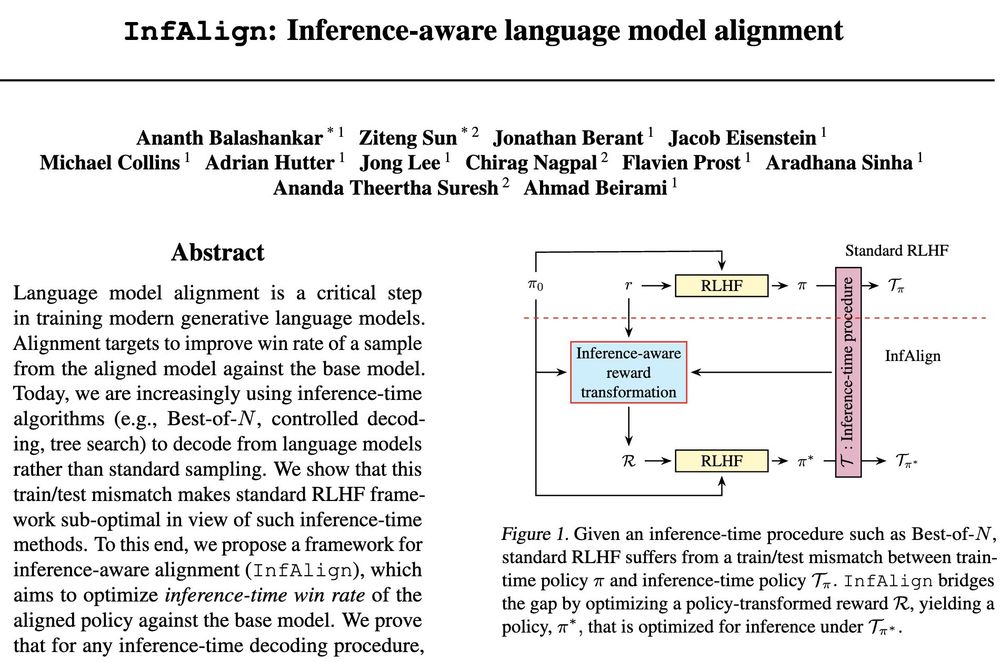Topics: LLM efficiency; LLM alignment; Differential Privacy; Information Theory. Research Scientist @Google; PhD @Cornell












𝘊𝘢𝘯 𝘸𝘦 𝘢𝘭𝘪𝘨𝘯 𝘰𝘶𝘳 𝘮𝘰𝘥𝘦𝘭 𝘵𝘰 𝘣𝘦𝘵𝘵𝘦𝘳 𝘴𝘶𝘪𝘵 𝘢 𝘨𝘪𝘷𝘦𝘯 𝘪𝘯𝘧𝘦𝘳𝘦𝘯𝘤𝘦-𝘵𝘪𝘮𝘦 𝘱𝘳𝘰𝘤𝘦𝘥𝘶𝘳𝘦?
Check out below.

𝘊𝘢𝘯 𝘸𝘦 𝘢𝘭𝘪𝘨𝘯 𝘰𝘶𝘳 𝘮𝘰𝘥𝘦𝘭 𝘵𝘰 𝘣𝘦𝘵𝘵𝘦𝘳 𝘴𝘶𝘪𝘵 𝘢 𝘨𝘪𝘷𝘦𝘯 𝘪𝘯𝘧𝘦𝘳𝘦𝘯𝘤𝘦-𝘵𝘪𝘮𝘦 𝘱𝘳𝘰𝘤𝘦𝘥𝘶𝘳𝘦?
Check out below.

